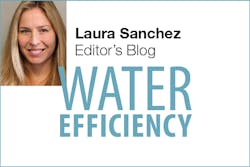At 11 years old, Gitanjali Rao watched her parents test the drinking water at their home in Lone Tree, CO, with a clumsy home test strip kit. The results were hazy and unreliable. Amid the turbulence of the Flint water crisis, she became determined to develop a solution.
Rao designed a small water-testing device to help detect lead in drinking water. She had learned about how carbon nanotubes can detect gases in the air and applied a similar methodology to the detection of lead. The invention—named Tethys, after the Greek Titan goddess of clean water—is composed of a 3D-printed, card-deck-sized box; a battery; Bluetooth; and carbon nanotubes.
It operates on the understanding that carbon atoms connect to form nanotubes, which respond to changes in the flow of electrons. If there is lead in the water, the lead will stick to the carbon ions, creating resistance. Rao’s device measures the resistance and transmits the data to a smartphone app to indicate the presence of lead in water.
“[Tethys] is for people who don’t really know what’s in their water from the pipes leading to their house. My target market right now is people in their homes as well as schools,” Rao told NPR.
Rao met Selene Hernandez-Ruiz, a lab manager at Denver Water, while visiting the facility. Hernandez-Ruiz recognized her enthusiasm and invited her to use the lab to further develop her invention. Today the two connect about once a month to work on the device and test its results.
“Right now, I’m looking at interference with other chemicals in water apart from lead,” Rao said. “Like, what if [the carbon] accidentally binds to fluoride? So that’s kind of what I’m trying to tackle.” She hopes to complete a prototype in the next two years.
Hernandez-Ruiz is thrilled to mentor a young female scientist and help nurture her scientific curiosity. “It’s so hopeful to see the current and next generation going for it,” she said. “With really the desire to excel and test those boundaries that sometimes we’re told we’re not supposed to come close to.”
This relationship is exemplary of one way water professionals can have a positive influence on future generations. What are your thoughts? In what other ways can the industry nurture the next generation of water professionals?
